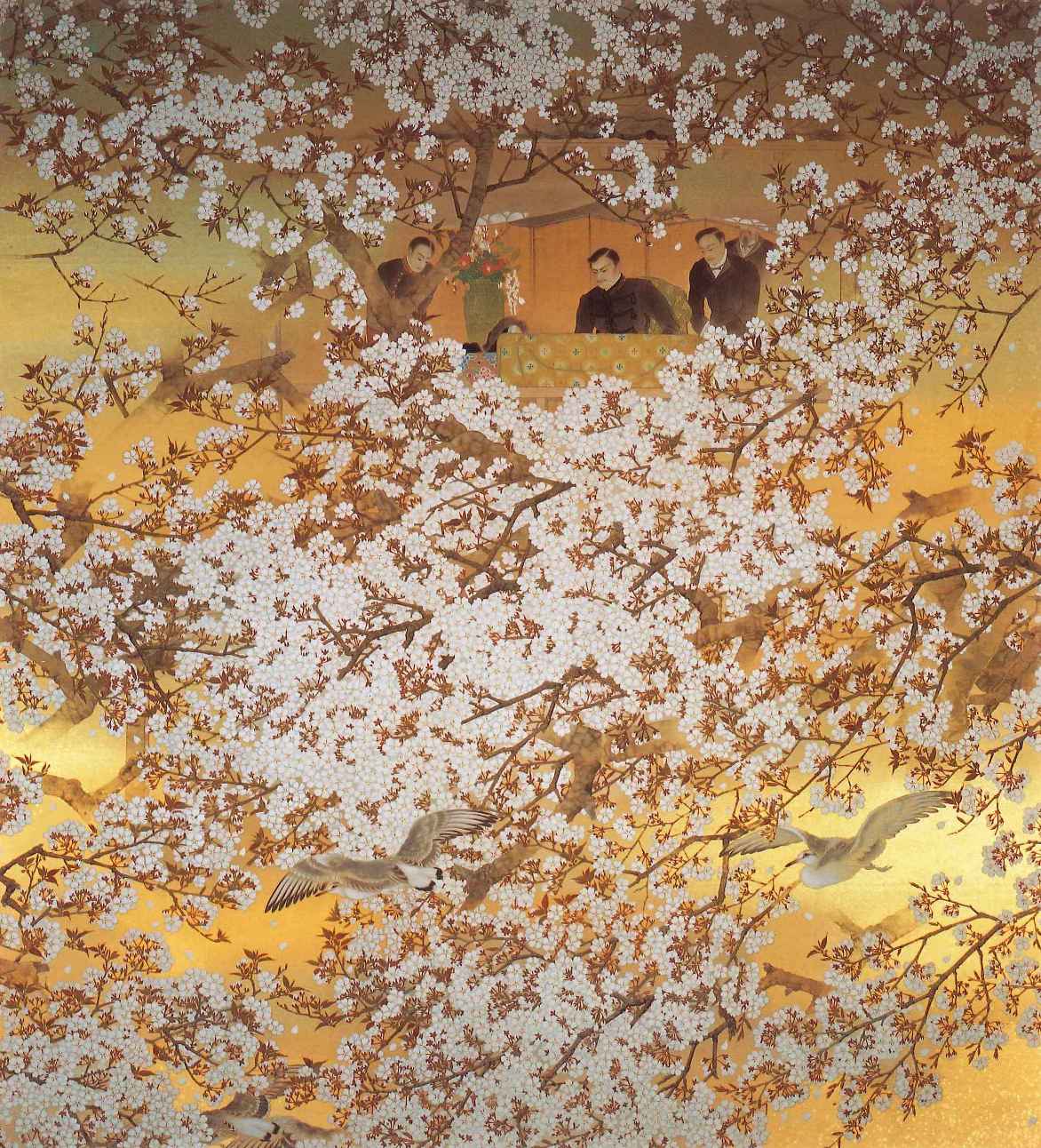Kimura Buzan on:
[Wikipedia]
[Google]
[Amazon]
 (3 July 1876 – 29 November 1942) was a Japanese ''
(3 July 1876 – 29 November 1942) was a Japanese ''
 (3 July 1876 – 29 November 1942) was a Japanese ''
(3 July 1876 – 29 November 1942) was a Japanese ''Nihonga
''Nihonga'' (, "Japanese-style paintings") are Japanese paintings from about 1900 onwards that have been made in accordance with traditional Japanese artistic conventions, techniques and materials. While based on traditions over a thousand years ...
'' painter associated with the Nihon Bijutsuin
is a non-governmental artistic organization in Japan dedicated to ''Nihonga'' (Japanese style painting). The academy promotes the art of Nihonga through a biennial exhibition, the ''Inten'' Exhibition .
History
The Nihon Bijutsuin was founded b ...
.
Life
Born in 1876 inKasama, Ibaraki
is a city located in Ibaraki Prefecture, Japan. , the city had an estimated population of 73,805 in 29,362 households and a population density of 307 persons per km². The percentage of the population aged over 65 was 32.2%. The total area of t ...
, the eldest son of a samurai
were the hereditary military nobility and officer caste of medieval and early-modern Japan from the late 12th century until their abolition in 1876. They were the well-paid retainers of the '' daimyo'' (the great feudal landholders). They h ...
in the Kasama Domain
was a feudal domain under the Tokugawa shogunate of Edo period Japan, located in Hitachi Province (modern-day Ibaraki Prefecture), Japan. It was centered on Kasama Castle in what is now the city of Kasama, Ibaraki. It was ruled by a number of cl ...
, as a child he studied with a ''Nanga'' master, then from his mid-teens with . In 1896 he graduated from the Tokyo School of Fine Arts
or is the most prestigious art school in Japan. Located in Ueno Park, it also has facilities in Toride, Ibaraki, Yokohama, Kanagawa, and Kitasenju and Adachi, Tokyo. The university has trained renowned artists in the fields of painting, scul ...
and in 1898 was involved in the foundation of the Nihon Bijutsuin
is a non-governmental artistic organization in Japan dedicated to ''Nihonga'' (Japanese style painting). The academy promotes the art of Nihonga through a biennial exhibition, the ''Inten'' Exhibition .
History
The Nihon Bijutsuin was founded b ...
.
After serving in the infantry during the Russo-Japanese War
The Russo-Japanese War ( ja, 日露戦争, Nichiro sensō, Japanese-Russian War; russian: Ру́сско-япóнская войнá, Rússko-yapónskaya voyná) was fought between the Empire of Japan and the Russian Empire during 1904 and 1 ...
, in 1906 along with Okakura Tenshin, Yokoyama Taikan
was the art-name of a major figure in pre-World War II Japanese painting. He is notable for helping create the Japanese painting technique of ''Nihonga''.
Early life
Yokoyama was born in Mito city, Ibaraki Prefecture, as the eldest son of S ...
, Shimomura Kanzan, Hishida Shunsō
was the pseudonym of a Japanese painter from the Meiji period. One of Okakura Tenshin's pupils along with Yokoyama Taikan and Shimomura Kanzan, he played a role in the Meiji era innovation of ''Nihonga''. His real name was Hishida Miyoji. He ...
and the Nihon Bijutsuin, he moved to Izura, now Ibaraki. The following year he contributed ''The Destruction of the Epang Palace
The Epang Palace was a Chinese palace complex built during the reign of Qin Shi Huang, the first emperor of China and the founder of the short-lived Qin dynasty. It is located in western Xi’an, Shaanxi Province. Archaeologists believe that on ...
by Fire'' to the First Bunten
The is a Japanese art exhibition established in 1907. The exhibition consists of five art faculties: Japanese Style and Western Style Painting, Sculpture, Craft as Art, and Sho (calligraphy). During each exhibition, works of the great masters are ...
Exhibition. In 1914 he was involved in the revival of the Nihon Bijutsuin, dissolved upon Okakura Tenshin's death the year before.
In 1934 he completed his murals in the Kondō
Kondō, Kondo or Kondou (近藤 "near wisteria") is a surname prominent in Japanese culture, although it also occurs in other countries. Notable people with the surname include:
* , Japanese ballet dancer
* Dorinne K. Kondo, anthropologist
* Kond ...
at Kongōbu-ji
is the ecclesiastic head temple of Koyasan, Kōyasan Shingon Buddhism, located on , Wakayama Prefecture, Japan. Its name means ''Temple of the Diamond Mountain Peak''. It is part of the "Sacred Sites and Pilgrimage Routes in the Kii Mountain Ra ...
, and the following year those of the in Kasama. From 1937, after an intracranial haemorrhage
Intracranial hemorrhage (ICH), also known as intracranial bleed, is bleeding within the skull. Subtypes are intracerebral bleeds ( intraventricular bleeds and intraparenchymal bleeds), subarachnoid bleeds, epidural bleeds, and subdural bleeds. ...
, he painted with his left hand. He died from a chronic asthma attack in Tokyo in 1942.
See also
*List of Nihonga painters
This is an alphabetical list of painters who are known for painting in the ''Nihonga'' style. It has to be noted that some artists also painted in the western ''Yōga'' style, and that the division between the two groups could be blurred at poin ...
References
External links
{{authority control 1876 births 1942 deaths Nihonga painters People from Ibaraki Prefecture 19th-century Japanese painters 20th-century Japanese painters